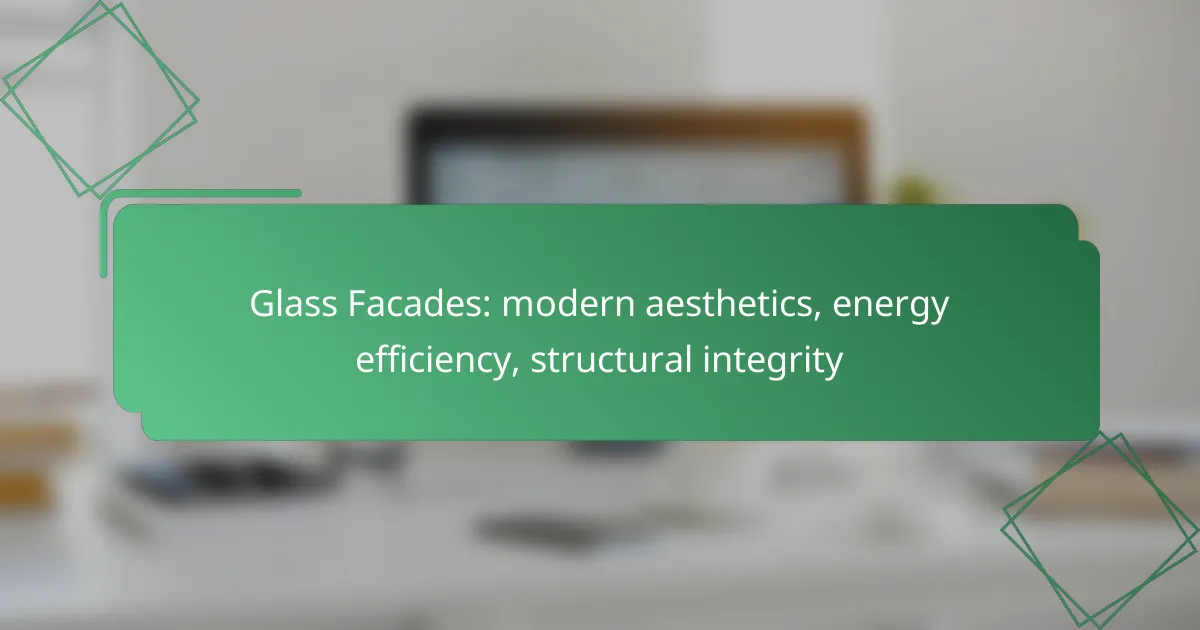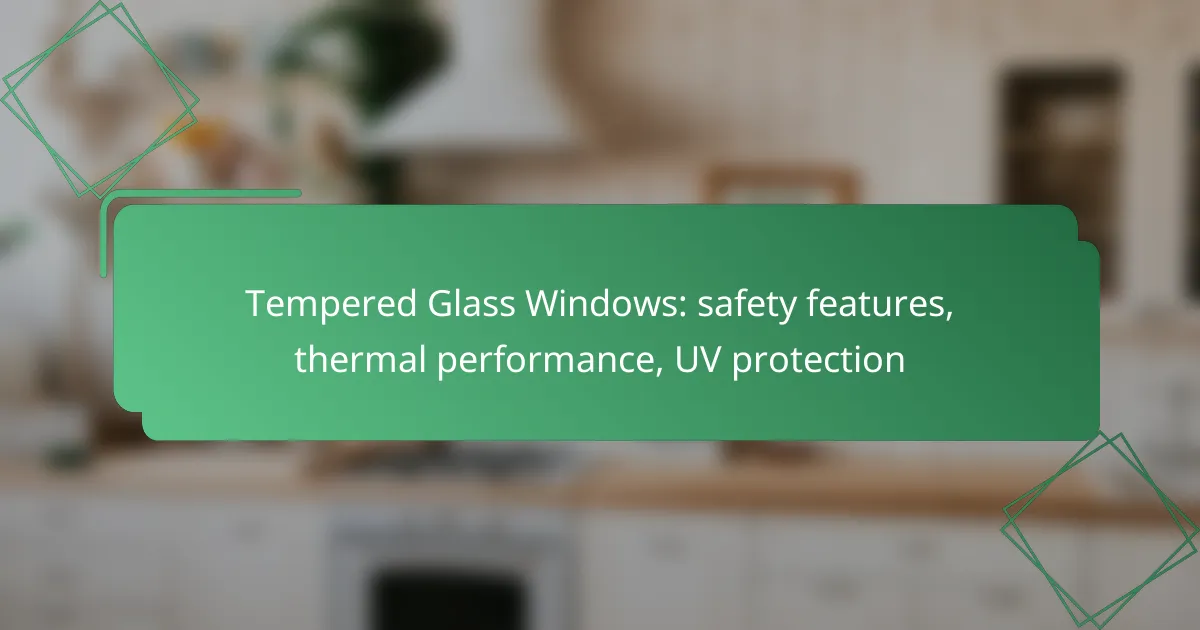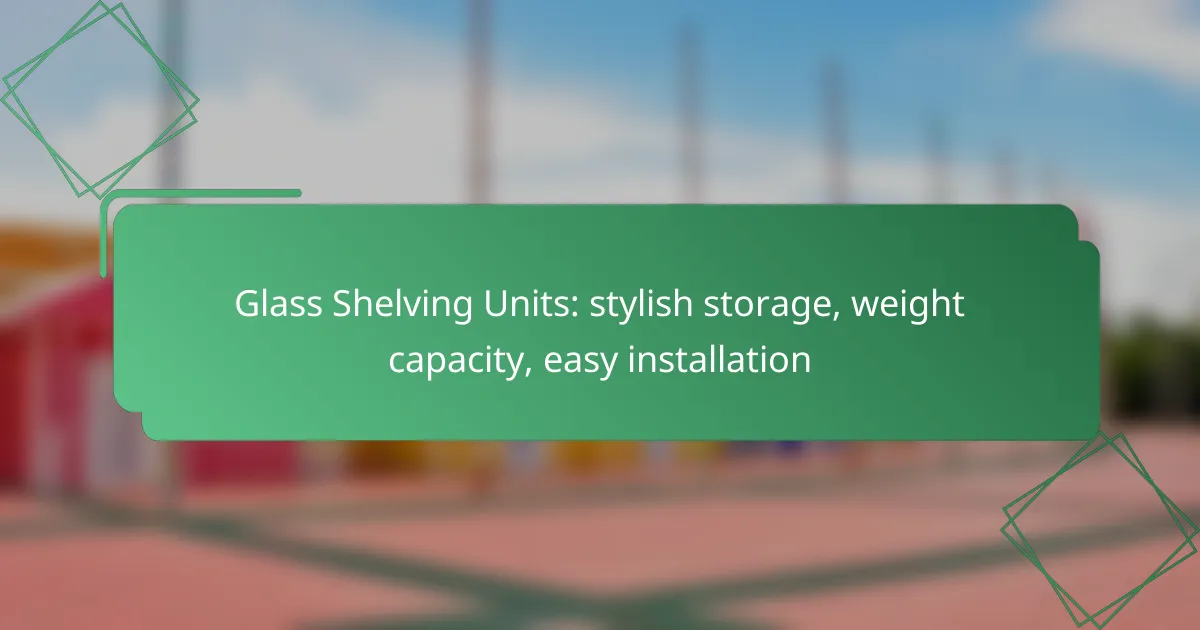Glass facades represent a harmonious blend of modern aesthetics and functional design, offering striking visual appeal while enhancing energy efficiency. By leveraging advanced materials and technologies, these facades minimize heat loss and maximize natural light, contributing to reduced energy costs and improved indoor comfort. Additionally, careful attention to structural integrity ensures that glass exteriors can withstand environmental challenges, making them a reliable choice for contemporary architecture.

What are the benefits of glass facades in Toronto?
Glass facades in Toronto offer numerous advantages, including enhanced aesthetics, improved energy efficiency, and better natural lighting. These benefits make them a popular choice for modern buildings in the city.
Enhanced natural lighting
Glass facades allow for abundant natural light to penetrate indoor spaces, creating a bright and inviting atmosphere. This can reduce the need for artificial lighting during the day, which can lead to lower energy costs.
In Toronto’s urban environment, maximizing natural light can improve the overall quality of life for occupants. It can also enhance the visual appeal of a building, making it more attractive to tenants and visitors alike.
Improved energy efficiency
Modern glass facades are designed with energy efficiency in mind, often incorporating double or triple glazing to minimize heat loss. This can significantly reduce heating and cooling costs, especially during Toronto’s cold winters and warm summers.
Additionally, many glass facades use low-emissivity (low-E) coatings that reflect heat while allowing natural light to enter. This technology helps maintain comfortable indoor temperatures and can contribute to achieving green building certifications.
Modern aesthetic appeal
The sleek and contemporary look of glass facades enhances the architectural style of buildings in Toronto. They can create a striking visual impact, making structures stand out in the city’s skyline.
Glass facades can be customized with various finishes and designs, allowing for creative expression while maintaining functionality. This modern aesthetic aligns well with current trends in urban development, appealing to both businesses and residents.
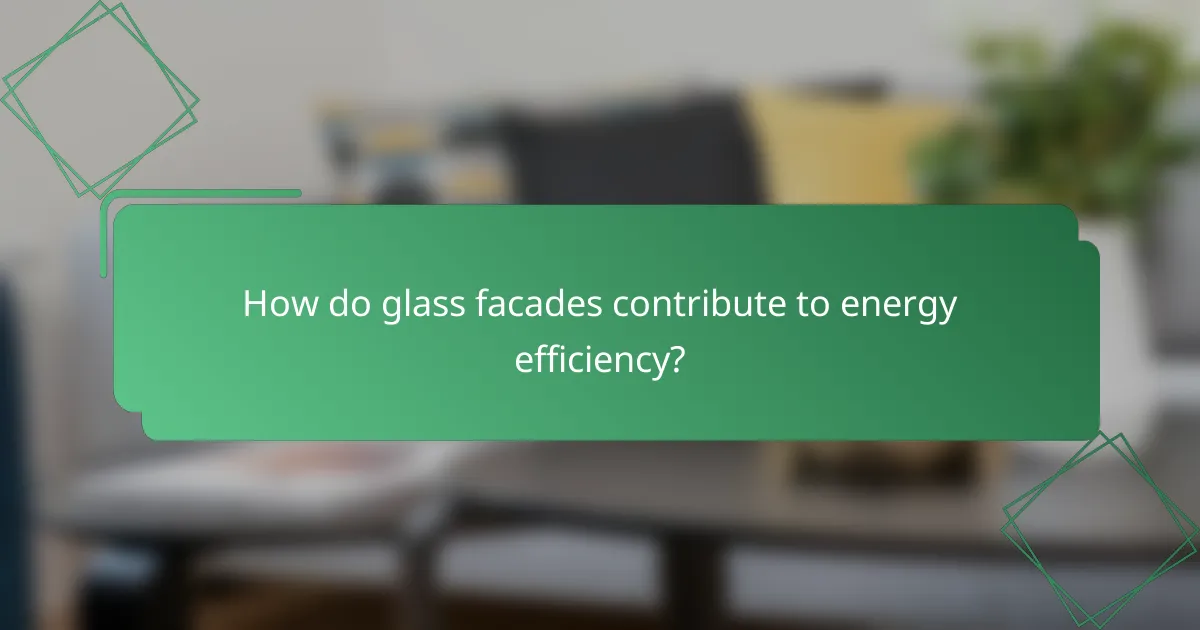
How do glass facades contribute to energy efficiency?
Glass facades enhance energy efficiency by minimizing heat loss and maximizing natural light, which reduces reliance on artificial lighting and heating. Their design incorporates advanced materials and technologies that help maintain comfortable indoor temperatures while lowering energy costs.
Use of low-emissivity coatings
Low-emissivity (low-E) coatings are thin layers applied to glass that reflect infrared energy while allowing visible light to pass through. This technology significantly reduces heat transfer, keeping interiors warmer in winter and cooler in summer. Buildings with low-E glass can achieve energy savings of up to 30% compared to standard glass.
Integration of solar control technologies
Solar control technologies, such as tinted glass and shading devices, help manage solar heat gain. By reflecting or absorbing sunlight, these technologies prevent excessive heat buildup inside buildings, which can lead to increased cooling costs. For optimal performance, consider the building’s orientation and local climate when selecting solar control options.
Thermal insulation properties
Glass facades with enhanced thermal insulation properties contribute to energy efficiency by reducing the amount of heat lost through the building envelope. Multi-pane glazing systems, such as double or triple glazing, trap air or gas between panes, providing superior insulation. Proper installation and sealing are crucial to maximize these benefits and prevent air leaks.
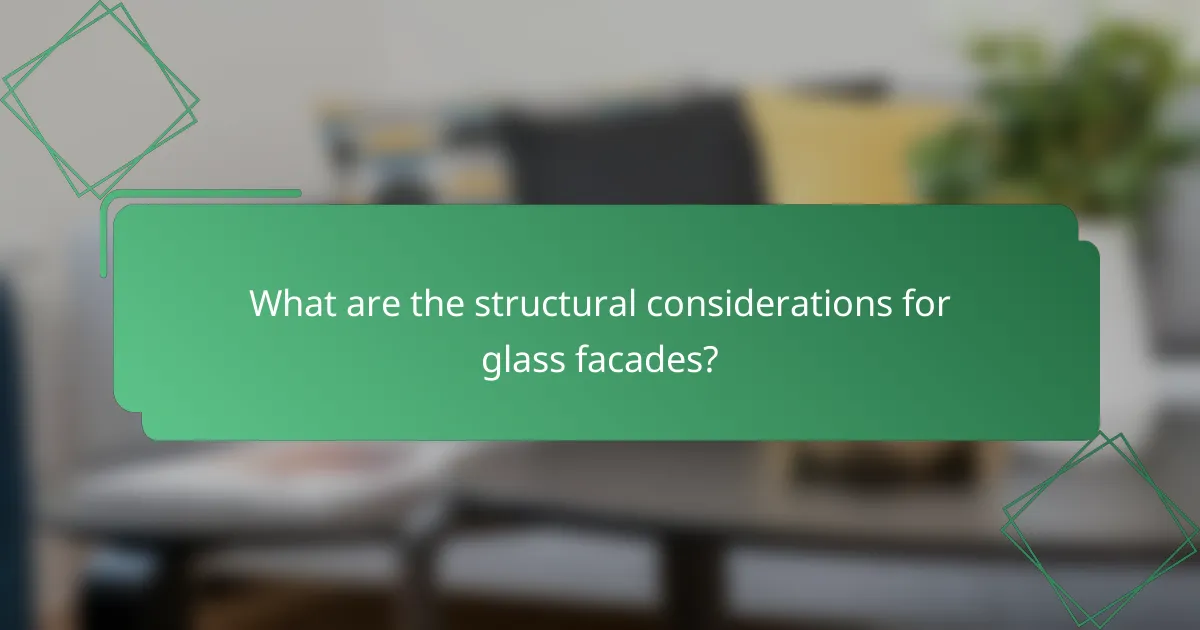
What are the structural considerations for glass facades?
Structural considerations for glass facades include load-bearing capabilities, wind resistance, and seismic performance. These factors are crucial for ensuring the safety, durability, and aesthetic appeal of buildings featuring glass exteriors.
Load-bearing capabilities
Load-bearing capabilities refer to the ability of glass facades to support various loads, including dead loads from the glass itself and live loads from environmental factors. Typically, structural glass is supported by framing systems made of steel or aluminum, which distribute the weight effectively.
When designing glass facades, engineers must consider the thickness and type of glass used, as well as the spacing of support elements. Laminated or tempered glass can enhance load-bearing strength, making it suitable for taller buildings or those in high-traffic areas.
Wind resistance standards
Wind resistance standards are essential for glass facades, particularly in regions prone to high winds or storms. These standards dictate the minimum performance requirements for glass panels to withstand wind loads without breaking or deforming.
In the United States, for example, the American Society of Civil Engineers (ASCE) provides guidelines for wind load calculations. Designers often use pressure coefficients to assess how wind interacts with the building’s surface, ensuring that the facade can endure forces that may reach several hundred Pascals.
Seismic performance
Seismic performance is a critical consideration for glass facades in earthquake-prone areas. The design must account for lateral forces caused by ground movement, which can lead to structural failure if not properly addressed.
To enhance seismic performance, engineers often incorporate flexible framing systems that allow for movement without compromising the integrity of the glass. Additionally, using materials that can absorb shock, such as laminated glass, can significantly improve the facade’s resilience during seismic events.

How to choose the right glass facade for a building?
Choosing the right glass facade involves considering factors such as energy efficiency, aesthetic appeal, and structural integrity. Prioritize the building’s location, intended use, and local climate to make an informed decision.
Assessing climate impact
Climate significantly influences the performance of glass facades. In warmer regions, opt for low-emissivity (low-E) glass to minimize heat gain, while in colder climates, insulated glass can help retain warmth. Consideration of local weather patterns, such as high winds or heavy rainfall, is also crucial for durability.
Evaluate the solar heat gain coefficient (SHGC) and visible transmittance (VT) ratings to ensure the glass meets energy efficiency standards. For instance, SHGC values below 0.25 are ideal for hot climates, while values above 0.40 may be suitable for colder areas.
Evaluating design compatibility
The glass facade should harmonize with the building’s overall design and purpose. Modern buildings often benefit from sleek, reflective glass, while historical structures may require more traditional materials. Assess how the facade complements architectural elements, such as framing and surrounding materials.
Consider the intended use of the building. For commercial spaces, large glass panels can enhance visibility and attract customers, while residential buildings may prioritize privacy and insulation. Aesthetic choices should align with the building’s function and the surrounding environment.
Understanding local building codes
Local building codes dictate specific requirements for glass facades, including safety standards, energy efficiency mandates, and structural regulations. Familiarize yourself with these codes to ensure compliance and avoid costly modifications later. Codes may vary significantly between regions, so consult local authorities or a professional architect.
In many areas, regulations may specify the type of glass used, such as tempered or laminated glass for safety. Additionally, energy performance standards may require a certain level of insulation or solar control, impacting your choice of materials. Always verify that your selections align with these legal requirements to facilitate a smooth approval process.
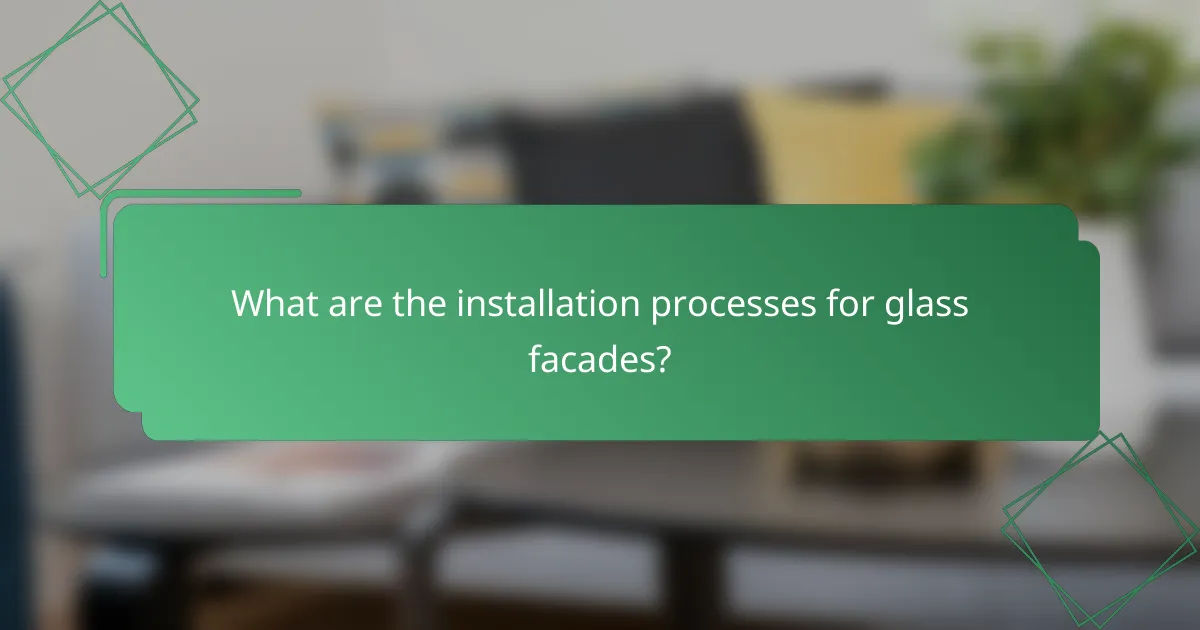
What are the installation processes for glass facades?
The installation of glass facades involves several critical steps to ensure aesthetic appeal, energy efficiency, and structural integrity. Key processes include preparing the structural framework, implementing sealing and weatherproofing techniques, and conducting thorough quality control measures.
Preparation of structural framework
Preparing the structural framework is essential for supporting glass facades. This involves assessing the building’s load-bearing capacity and ensuring that the framework is designed to accommodate the weight and stress of the glass panels. Common materials used include steel or aluminum, which provide durability and strength.
During this phase, precise measurements are taken to ensure that the framework aligns perfectly with the glass panels. Any discrepancies can lead to installation challenges and potential structural issues, so attention to detail is crucial.
Sealing and weatherproofing techniques
Sealing and weatherproofing are vital to protect the building from moisture and air infiltration. This process typically involves using high-quality sealants and gaskets that can withstand various weather conditions. Proper sealing not only enhances energy efficiency but also prolongs the lifespan of the facade.
It is important to select materials that comply with local building codes and standards. For instance, in Europe, EN 13830 outlines performance requirements for curtain walling, which can guide the selection of appropriate sealing materials.
Quality control measures
Quality control measures ensure that the installation meets safety and performance standards. This includes inspecting the structural framework for any defects before glass installation begins, as well as checking the alignment and fit of the glass panels during installation.
Regular inspections should be conducted throughout the process, and any issues should be addressed immediately to avoid costly rework. Implementing a checklist for each stage of the installation can help maintain high standards and ensure compliance with regulations.

What are the maintenance requirements for glass facades?
Glass facades require regular maintenance to ensure their aesthetic appeal and structural integrity. Key tasks include routine cleaning and periodic inspections for damage to maintain energy efficiency and safety.
Regular cleaning schedules
Establishing a regular cleaning schedule is essential for glass facades to prevent dirt and grime buildup, which can impair visibility and aesthetics. Cleaning should typically occur every few months, depending on environmental factors such as local pollution and weather conditions.
Use appropriate cleaning solutions and tools to avoid scratching the glass. For high-rise buildings, consider hiring professional services that specialize in facade cleaning to ensure safety and effectiveness.
Inspection for damage
Regular inspections for damage are crucial to identify issues like cracks, chips, or sealant deterioration. Conduct inspections at least twice a year, ideally in spring and fall, to catch problems early before they escalate.
During inspections, check for signs of water intrusion or structural issues that could compromise the facade’s integrity. Address any identified damage promptly to avoid costly repairs and maintain energy efficiency.






